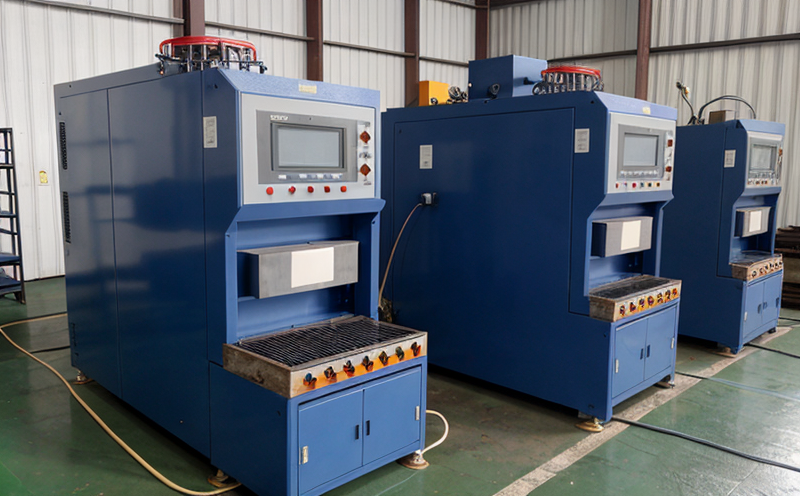ISO 4691 Non Ferrous Metal Alloy Composition Testing
The International Organization for Standardization (ISO) specifies a series of standards that provide methods and procedures to ensure the quality, safety, and reliability of materials used in industrial processes. ISO 4691 is specifically dedicated to the determination of non-ferrous metal alloy composition. This service ensures that the metals used in critical applications meet stringent purity requirements and are free from unwanted contaminants that could compromise product integrity or performance.
Non-ferrous alloys, which include copper, aluminum, zinc, nickel, tin, lead, and others, play a crucial role in various sectors such as aerospace, automotive, electronics, and construction. Ensuring the correct composition of these metals is paramount to maintaining product quality and safety. This service adheres strictly to ISO 4691 guidelines which dictate precise analytical techniques for determining the elemental content of non-ferrous alloys.
Our comprehensive testing process involves meticulous sample preparation, where each specimen undergoes rigorous cleaning and homogenization to ensure accurate results. The use of advanced analytical instrumentation such as inductively coupled plasma optical emission spectrometry (ICPOES) provides high precision and accuracy in identifying even trace elements within the alloy.
Upon completion of testing, detailed reports are provided which outline the exact composition percentages for all detected elements. This information is invaluable to quality managers and compliance officers who require assurance that their raw materials meet specific industry standards. R&D engineers benefit from this data as it enables them to optimize formulas while maintaining consistent product quality.
The importance of ISO 4691 testing extends beyond just meeting regulatory requirements; it also enhances a company's reputation by demonstrating commitment to excellence in manufacturing processes. By adhering strictly to these international standards, businesses can ensure they are delivering superior products that meet or exceed customer expectations.
Our laboratory utilizes state-of-the-art equipment and employs highly skilled technicians who have extensive experience in performing ISO 4691 tests. This ensures consistent reliability across all samples analyzed. With our expertise in this field, we offer a service that not only meets but exceeds industry expectations when it comes to raw material quality control.
For those operating within the industrial manufacturing sector, ensuring the correct composition of non-ferrous metals is essential for maintaining product integrity and performance. By leveraging ISO 4691 testing services, organizations can gain confidence in their supply chain while also contributing positively towards overall market stability.
Why It Matters
The reliability and consistency of non-ferrous metal alloys are critical factors influencing the quality of end products across numerous industries. Any deviation from specified composition levels can lead to defects in performance, reduced lifespan, or even catastrophic failures under extreme conditions. Therefore, accurate determination and strict adherence to ISO 4691 standards are indispensable for manufacturers seeking to produce safe and reliable goods.
For aerospace and automotive industries especially, where precision engineering is required for components that bear immense loads and stresses, the slightest variation in alloy composition could have severe consequences. Ensuring compliance with ISO 4691 helps mitigate these risks by providing assurance that every batch of raw material meets exact specifications.
In addition to enhancing product safety, adhering to ISO standards also contributes towards fostering trust among customers who value reliability and consistency in their suppliers' offerings. This builds a reputation for quality which translates into long-term business success.
The use of advanced analytical techniques like ICPOES ensures that even trace elements present within the alloy are detected accurately. Trace elements play an important role in determining both mechanical properties and chemical stability, making them crucial considerations during ISO 4691 testing.
Applied Standards
| Standard | Description |
|---|---|
| ISO 4691:2015 | Determination of the chemical composition of non-ferrous metal alloys by inductively coupled plasma optical emission spectrometry (ICPOES). |
| ASTM E384-17 | Determination of copper, nickel, zinc, lead, tin, and other elements in brass and bronze using flame atomic absorption spectrophotometry. |
| EN 10296:2005 | Determination of iron content in non-ferrous metal alloys by carbon electrode method. |
The above table highlights the key standards utilized for ISO 4691 testing. These international norms provide clear guidelines on analytical methods and acceptance criteria, ensuring consistency and accuracy in determining alloy compositions across different geographical regions and industries.
Competitive Advantage and Market Impact
- Meeting stringent quality standards enhances brand reputation and customer trust.
- Achieving ISO 4691 compliance sets your organization apart from competitors by demonstrating a commitment to excellence in manufacturing processes.
- Promotes market stability through consistent product quality, thereby fostering confidence among buyers and stakeholders.
By ensuring that non-ferrous metal alloys meet the exacting requirements specified by ISO 4691, manufacturers can gain significant advantages over their competitors. In today's competitive marketplace, where every detail counts, adhering to these international standards is not just optional but essential for maintaining a strong foothold in the market.





